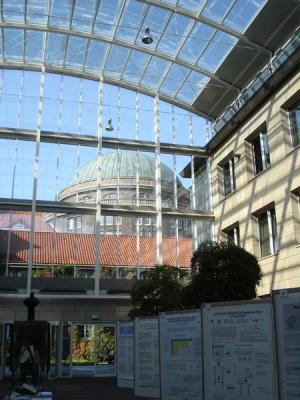GCB 2005, closing remarks
Many German bioinformaticians usually view the yearly German Conference on Bioinformatics as a necessary evil. Who wants to listen to mediocre talks in stale run down German university lecture theatres? - the sole reason to go was networking. However, I (and many others) consider RECOMB and ISMB - the two major bioinformatics conferences - to have a similarly disappointing line up compared to smaller workshops with a high degree of invited speakers.
The way these conferences are set up currently is just not very rewarding and while there are many submissions, the number of promising submission is fairly low. If bioinformaticians have to watch their impact factors (unlike say mathematicians), submitting to a conference is not worth the hassle, even if some of the talks are published in Bioinformatics.
Luckily, this years talks - contributed and invited - were much better than in previous years and I am glad I attended. The organization was smooth (owing to the increased registration fee, some people say) and the main building of the university of Hamburg was a pleasant venue and Hamburg, is a metropolitan city worth a visit anyway. Tübingen, certainly nice but not exactly a metropolis, will host the next GCB from September 22 to 24th, 2006.
The way these conferences are set up currently is just not very rewarding and while there are many submissions, the number of promising submission is fairly low. If bioinformaticians have to watch their impact factors (unlike say mathematicians), submitting to a conference is not worth the hassle, even if some of the talks are published in Bioinformatics.
Luckily, this years talks - contributed and invited - were much better than in previous years and I am glad I attended. The organization was smooth (owing to the increased registration fee, some people say) and the main building of the university of Hamburg was a pleasant venue and Hamburg, is a metropolitan city worth a visit anyway. Tübingen, certainly nice but not exactly a metropolis, will host the next GCB from September 22 to 24th, 2006.
spitshine - 2005-10-07 17:37


